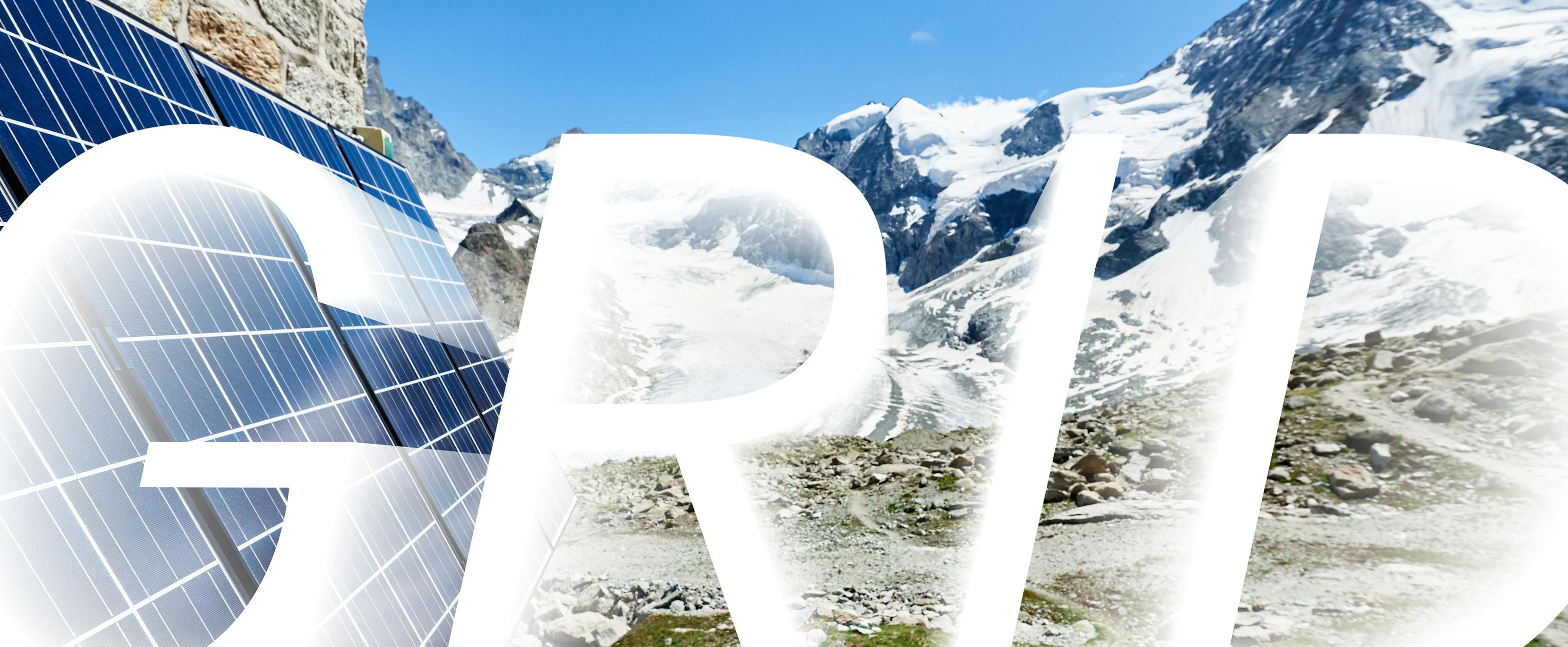
All aboard! In autumn 2022, the Swiss parliament set the «solar express» in motion. The idea was to rapidly build large photovoltaic plants in the mountains to combat the looming winter electricity shortfall. High investment contributions are offered as an incentive.
One aspect that is sometimes forgotten in the process is that large-scale plants of this kind also pose a challenge for grid operators. That is because the grid operators have to take care of the associated grid connections. And this can mean the start of a lengthy, costly grid project – especially in mountainous areas.
Short days, lots of fog, not much sunlight: in winter, the solar plants in Central Switzerland supply relatively low volumes of electricity. Photovoltaic plants in the mountains, on the other hand, can produce plenty of energy by taking advantage of the abundant sunshine above the fog cover and the reflections off the snow.
That is why the Swiss parliament has decided to significantly promote alpine solar plants. The federal government will now cover up to 60 percent of the investment costs for this type of system – provided it supplies at least 10 GWh of energy per year and starts feeding electricity into the grid by the end of 2025. This federal offensive is referred to as the «solar express».
Powerful grid connections
Of course, many energy companies and other investors now want to jump onto the moving express train. Numerous major projects have already been announced in the media, and more are likely to be presented in the coming weeks and months. But when it comes to this kind of project, the actual installation – i.e. the solar modules, assembly system, cabling, electronics, etc. – is only part of the whole. The grid connection is just as important: without this, the energy produced can’t be transported anywhere.
An alpine solar plant therefore requires interaction between production and grid experts right from the start. Anyone planning a solar project in the mountains should involve the local grid operator as soon as possible. Given the high production capacity of the system, an equally powerful grid connection is needed – and this is no trivial matter for the grid operator.
«The grid connection is an important part of a solar project: without it, the energy produced can’t be transported anywhere.»
Simon Nay
Detailed clarifications necessary
Simon Nay confirms this. He is in charge of grid projects at Repower. The energy company based in Poschiavo operates the electricity grid in large parts of the canton of Graubünden – in other words, in the mountainous area that will soon be home to various alpine solar plants. On the one hand, Repower wants to implement the systems itself. On the other hand, the company is expecting several projects from other investors in its grid area.
When Repower becomes aware of a specific project idea, the company approaches the people behind it on its own initiative: «We hold initial talks with them and gain a picture of the planned alpine photovoltaic plant,» says Simon Nay. «After that, we clarify in detail whether and how the grid connection can be put into practice.»
The project scope depends on the grid level
The grid level the solar plant can be connected to is a key factor. The Swiss electricity grid has seven grid levels at different voltages. The higher the voltage of a line, the more power can be transported along it. The production capacity of a photovoltaic plant determines which grid level it will be connected to.
This is usually grid level 3 for large-scale alpine plants, according to Simon Nay from Repower. Electricity flows along these lines at a high voltage of between 36 and 150 kV. This determines the degree of complexity of the grid connection. «The power of our grids is limited, especially in local valley communities such as Surselva, Engadin or Prättigau,» says Simon Nay. «Connecting a high-power solar plant requires reinforcements and upgrades of our lines, substations and transformers.»
Swissgrid is also involved in this type of project. This is because in order for large volumes of solar electricity to flow from Repower’s high-voltage grid (grid level 3) into Swissgrid’s extra-high-voltage grid (grid level 1), the electricity must be brought to a voltage of at least 220 kV using transformers. The alpine solar plants may make it necessary to reinforce the transformers. This is carried out in close coordination with Swissgrid.
«Connecting a high-power solar plant requires reinforcements and upgrades of lines, substations and transformers.»
Simon Nay
Realising a grid connection in two steps
Due to the short deadlines for the «solar express», Repower takes a two-step approach to requests for grid connections. First, the grid experts show the initiators of the solar project how solar modules for producing ten percent of the ultimate total power can be connected to the grid. This is because ten percent of the project must be completed by 2025 in order for the plant to receive the federal investment contribution.
«This first step is usually feasible with relatively little effort because the grid connection can be implemented via the medium-voltage grid (grid level 5),» says grid specialist Simon Nay. «The second step is more demanding – the full expansion of the grid connection to cope with the total power of the alpine solar plant. Depending on the size of the plant, this may require a switch to the high-voltage grid (grid level 3).»
Challenges in mountainous areas
In addition to the usual lengthy approval process for high-voltage grid projects, projects in mountainous areas involve additional challenges, for example in terms of logistics. This is because heavy trucks and construction machines are often unable to access the site via the mountain roads, which must first be expanded and reinforced.
Besides, the construction season at altitude is only short: «In the Upper Engadine, for example, a large-scale alpine plant would probably be built at 1,700 metres or higher,» Simon Nay estimates. «Construction work does not come into question before April or May. And during the high season in summer, excavation work is impossible in certain places out of consideration for tourism. This increases the duration of the project even more.»
Higher time pressure
The fact that large grid projects take a long time is nothing new. However, the time pressure exerted by the builders of large production plants has increased. Marc Vogel, Senior Specialist Market & System Design at Swissgrid, has observed the same thing: «It used to take several years to build a hydropower plant. This left enough time to plan and implement the grid connection in parallel. Today, gas-fired power plants in Central Switzerland and solar plants in the mountains must be built and connected to the grid as quickly as possible. Given the complexity of the process, the grid connection often takes longer than the builders expect.»
It goes without saying that Repower and the other Swiss grid operators do everything they can to connect large solar plants to the grid quickly. But they can’t take a shortcut with an express train.
«The Swiss grid operators do everything they can to connect large solar plants to the grid quickly. But they can’t take a shortcut with an express train.»
Simon Nay





